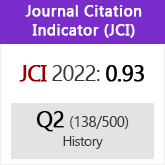El desarrollo de empuñadura de karabela de las espadas y sables: un estudio comparativo
DOI:
https://doi.org/10.3989/gladius.2016.0009Palabras clave:
Empuñadura de karabela, pomo de pico, ciudad de Karbala, espada mameluca, shamshir persa, sables turcos otomanos, sables polacos, espada de Omán, santuario del Imam Hussein, espada de jineta, espada sasánida, Bizancio, Sultán Selim I, Shah Abbas I, SultánResumen
Se describe la empuñadura de karabela como una empuñadura con una guarnición de cruz y un pomo en forma de una cabeza estilizada de un pájaro con más frecuencia similar a un halcón. Se montaba este tipo de empuñadura con largas hojas de sable de caballería. En general se montaba las empuñaduras de karabela con con diferentes tipos de hojas, a menudo con una forma de la hoja curvada de un shamshir persa clásico. Las karabelas más antiguas (de origen turco o basado en modelos turcos) que se conservan en los museos de Polonia, generalmente tienen hojas con un contrafilo llamado yelman. El llamado `sable de halcón` es cercanamente asociado con karabela con su característica principal, una forma característica de un pomo curvo parecido a la cabeza de un halcón y una guarnición de cruz. El principal objetivo del presente artículo es hacer un estudio comparativo sobre las diferentes fuentes sobre los sables y espadas con empuñadura karabela y tratar de establecer un origen de este tipo de empuñadura.
Descargas
Citas
Allan, J. (2003): «Early Safavid Metalwork». Jon Thompson and Sheila R. Canby (eds.), Hunt for Paradise. Milan: Skira Editore: 203-247.
Aydin, H. (2012): Sultanlarin Silahlari: Topkapi Sarayi Silah Koleksiyonu / Hilmi Aydin. Ankara: Kül tür ve Turizm Bakanlı?ı.
Biernacki, C. (1900): «Karabela». S. Orgelbranda ?n??klopedia Powszechna z Ilustracjami i Mapami.?. VIII. Od Litery K do Kruszy?ski. Warszawa: Wydawnictwo Towarzystwa Akcyjnego Odlewni Czcionek I Drukarni S. Orgelbranda Synów: 103.
Bruhn de Hoffmeyer, A. (1961): «Introduction to the History of the European Sword». Gladius , ?: 30-75. https://doi.org/10.3989/gladius.1961.212
Bruhn de Hoffmeyer, A. (1966): «Military Equipment in the Byzantine Manuscript of Scylitzes in Biblioteca Nacional de Madrid». Gladius, V: 1-194.Chody?ski, A. (ed.) (2000): Or?? Perski i Indoperski XVI–XIX wieku ze zbiorów Polskich. Malbork: Muzeum Zamkowe w Malborku.
Dziewanowski, W. (1935): Zarys dziejów uzbrojenia w Polsce . Warszawa: G?ówna Ksi?garnia Wojskowa.
Dziewulski, M. (2007): «Oriental Influences on Polish Arms». Ethnographic Arms and Armor Seminar in Timonium, 17th March 2007. Michal Dziewulski. Електрон. дані: 1-35. http://www.vikingsword. com/ethsword/Dziewulski01.pdf
Elgood, R. (1994): The Arms and Armour of Arabia in the 18th–19th and 20th Centuries. Vermont, Scolar Press.
Farrokh, K. (2005). Sassanian Eilte Cavalry AD 224-642. Oxford: Osprey Publishing Ltd.
Harper, P. O. (1978): The Royal Hunter: Art of the Sassanid Empire. New York, The Asia House Gallery.
Harper, P. O. (1961): «The Senmurv». Metropolitan Museum of Art Bulletin, New York, v. 20, no. 3, November: 95-101. https://doi.org/10.2307/3257932
Hartleb, Z. (1926): Szabla polska . Lwów; Warszawa; Kraków: Wyd. Zak?adu Narodowego im. Ossoli?skich, 59.
Janiak, R. (2007): «Pasja zbierania. Kolekcja Ryszarda: katalog wystawy». Ryszard de Latour, Anna
Khorasani, M. M. (2006): Arms and Armor from Iran: The Bronze Age to the End of the Qajar Period. Tübingen: Legat Verlag.
Khorasani, M. M. (2008): «Dragons Teeth: The Straight Swords of Persia». Classic Arms and Militaria Volume XV Issue 1: 21-25.
Khorasani, M. M. and Szántó, I. (2012): «Straight Swords in Iran: A Continuing Tradition (A perzs pallos: egy töretln hagyomány)». Persian Treasures - Hungarian Collections (Perzsa Kincsk - Magyar
Lebedynsky, I. (1990): Armes Cosaques et Caucasiennes et les Armes Traditionnelles d'Europe Orientale. La Tour du Pin: Éditions du Portail.
Lebedynsky, I. (1992): Les Armes Orientales. La Tour du Pin: Editions du Portal.
Ledóchowski, S. (1980): Polskie szable paradne. Warszawa: KAW.
Lepkowski, J. (1857): Bro? sieczna w ogóle i w Polsce uwa?ana archeologicznie / przez. Kraków: Czcionkami «CZASU».
Lukonin, W. and Ivanov, A. (2003): Die Kunst Persiens: die verlorenen Schätze. London: Sirocco.
Masia, K. (2000): «The Evolution of Swords and Daggers in the Sasanian Empire». Iranica Antiqua, vol. XXXV: 185-289. http://dx.doi.org/10.2143/ia.35.0.519101 https://doi.org/10.2143/IA.35.0.519101
Meyer, S. (1934): «Typy szabel polskich». Stanis?aw Meyer. Bro? i Barwa. R.I, no 4: 66-72.
Meyer, S. (1935): «Genealogja szabli polskiej», Bro? i Barwa R. II, no. 5: 98-105.
Nadolski, A. (1984): Polska bro?. Bro? bia?a . Wroc?aw: Zak?ad Narodowy imienia Ossoli?skich.
Nicolle, D. (1999): Arms and Armour of the Crusading Era 1050-1350. Islam, Eastern Europe and Asia. London: Greenhill Books.
North, A. (1982): Introduction to European Swords. London: Stemmer House Pub.
Oakeshott, E. (1998): The Sword in the Age of Chivalry, Woodbridge. PMCid:PMC2665566
Pinchot, O. (2002): «The Persian Shamshir and the Signature of Assdaollah». Arms Collecting, vol. 40, no. 1: 3 - 11.
Pyhrr, S.; Godoy, J. and Leydi, S. (1998): Heroic Armor of the Italian Renaissance: Filippo Negroli and His Contemporaries. New York: Metropolitan Museum of Art.
Snodgrass, A. (1967): Arms and Armour of the Greeks. Ithaca: Thames and Hudson, Cornell University Press. PMCid:PMC1468527
Soudavar, Abolala (2003): The Aura of Kings: Legitimacy and Divine Sanction in Iranian Kingship. Costa Mesa: Mazda Publishers.
Tarassuk, L. and Blair, C. (eds.) (1982): The Complete Encyclopedia of Arms & Weapons. New York: Simon and Schuster.
Yücel, Ü. (2001): Islamic Swords and Swordsmiths. Istanbul: O. I. C. Research Centre for Islamic History, Art and Culture, IRCICA. Бехайм В. (1995): Энциклопедия оружия [пер. с нем. А. Девель и др.]. СПб.: Санкт-Петербург. оркестр.
Введенский Г. (2003): Ятаган: факты и гипотезы. Антиквариат, предметы искусства и коллекционирования. № 5. С. 96-99.
Горелик М. (2004): Об одной разновидности евразийских клинков эпохи развитого средневековья. Военное дело народов Сибири и Центральной Азии: cб. науч. трудов. — Новосибирск, Вып.1.
Квасневич В. (2006): Польские сабли. [пер. c пол.]. СПб.: Атлант.
Кулинский А. (2003): Европейское холодное оружие. СПб.: Атлант.
Лайбле Т. (2008): Меч. Большая иллюстрированная энциклопедия [пер. с нем.]. М.: Омега.
Носов, К. (2011): Традиционное оружие Индии. М.: Эксмо.
Сокольский Н. (1954): Боспорские мечи, М.: Изд-во АН СССР, 170 с. (Материалы и исследования по археологии СССР.; т. 33).
Уизерс Х., Дж. (2011): Мечи и сабли. Большая энциклопедия [пер. с англ.]. М.: Изд-во Наше слово; ЭКСМО.
Descargas
Publicado
Cómo citar
Número
Sección
Licencia
Derechos de autor 2016 Consejo Superior de Investigaciones Científicas (CSIC)

Esta obra está bajo una licencia internacional Creative Commons Atribución 4.0.
© CSIC. Los originales publicados en las ediciones impresa y electrónica de esta Revista son propiedad del Consejo Superior de Investigaciones Científicas, siendo necesario citar la procedencia en cualquier reproducción parcial o total.Salvo indicación contraria, todos los contenidos de la edición electrónica se distribuyen bajo una licencia de uso y distribución “Creative Commons Reconocimiento 4.0 Internacional ” (CC BY 4.0). Puede consultar desde aquí la versión informativa y el texto legal de la licencia. Esta circunstancia ha de hacerse constar expresamente de esta forma cuando sea necesario.
No se autoriza el depósito en repositorios, páginas web personales o similares de cualquier otra versión distinta a la publicada por el editor.














